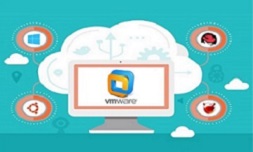Guest operating system explained
A virtual machine has an operating system (called the guest operating system) that you install and manage in much the same way like you would do with an operating system on a physical machine. The guest operating system installation is carried out using a CD-ROM, DVD, or an ISO image that contains the operating system installation files.
Many guest operating systems are supported by Player, such as Windows XP, Windows 7, Windows 8, Windows 10, Windows Server 2008, Windows Server 2012, Solaris, Debian, CentOS, SUSE, FreeBSD, Red Hat, etc. For the most recent list of the supported guest operating systems, check out the VMware Compatibility Guide.
Just like with the operating system installation on a physical computer, you need to have an installer disc or an ISO image file of the operating system you would like to install. An ISO file (also called an ISO image) is a single file that replicates the contents of an optical disc. ISO files are used to distribute large programs over the Internet, including operating systems such as Microsoft Windows and Linux. For example, on this link below you can download an ISO version of Damn Small Linux and use it to install this Linux distribution in Player.



